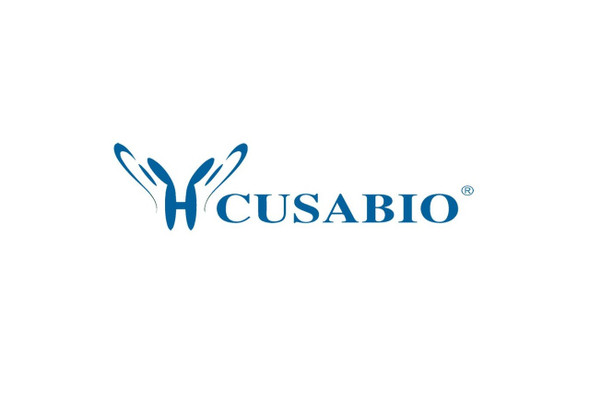Cusabio Human Recombinants
Recombinant Human Methylenetetrahydrofolate reductase (MTHFR) | CSB-EP015158HU
- SKU:
- CSB-EP015158HU
- Availability:
- 13 - 23 Working Days
Description
Recombinant Human Methylenetetrahydrofolate reductase (MTHFR) | CSB-EP015158HU | Cusabio
Alternative Name(s): 5 10 methylenetetrahydrofolate reductase (NADPH); 5 10 methylenetetrahydrofolate reductase; Methylenetetrahydrofolate reductase (NAD(P)H); Methylenetetrahydrofolate reductase; Methylenetetrahydrofolate reductase intermediate form; MTHFR; MTHR_HUMAN
Gene Names: MTHFR
Research Areas: Metabolism
Organism: Homo sapiens (Human)
AA Sequence: MVNEARGNSSLNPCLEGSASSGSESSKDSSRCSTPGLDPERHERLREKMRRRLESGDKWFSLEFFPPRTAEGAVNLISRFDRMAAGGPLYIDVTWHPAGDPGSDKETSSMMIASTAVNYCGLETILHMTCCRQRLEEITGHLHKAKQLGLKNIMALRGDPIGDQWEEEEGGFNYAVDLVKHIRSEFGDYFDICVAGYPKGHPEAGSFEADLKHLKEKVSAGADFIITQLFFEADTFFRFVKACTDMGITCPIVPGIFPIQGYHSLRQLVKLSKLEVPQEIKDVIEPIKDNDAAIRNYGIELAVSLCQELLASGLVPGLHFYTLNREMATTEVLKRLGMWTEDPRRPLPWALSAHPKRREEDVRPIFWASRPKSYIYRTQEWDEFPNGRWGNSSSPAFGELKDYYLFYLKSKSPKEELLKMWGEELTSEESVFEVFVLYLSGEPNRNGHKVTCLPWNDEPLAAETSLLKEELLRVNRQGILTINSQPNINGKPSSDPIVGWGPSGGYVFQKAYLEFFTSRETAEALLQVLKKYELRVNYHLVNVKGENITNAPELQPNAVTWGIFPGREIIQPTVVDPVSFMFWKDEAFALWIERWGKLYEEESPSRTIIQYIHDNYFLVNLVDNDFPLDNCLWQVVEDTLELLNRPTQNARETEAP
Source: E.coli
Tag Info: N-terminal 6xHis-SUMO-tagged
Expression Region: 1-656aa
Sequence Info: Full Length
MW: 90.6 kDa
Purity: Greater than 90% as determined by SDS-PAGE.
Relevance: Catalyzes the conversion of 5,10-methylenetetrahydrofolate to 5-methyltetrahydrofolate, a co-substrate for homocysteine rethylation to methionine.
Reference: NIEHS SNPs programThe DNA sequence and biological annotation of human chromosome 1.Gregory S.G., Barlow K.F., McLay K.E., Kaul R., Swarbreck D., Dunham A., Scott C.E., Howe K.L., Woodfine K., Spencer C.C.A., Jones M.C., Gillson C., Searle S., Zhou Y., Kokocinski F., McDonald L., Evans R., Phillips K. , Atkinson A., Cooper R., Jones C., Hall R.E., Andrews T.D., Lloyd C., Ainscough R., Almeida J.P., Ambrose K.D., Anderson F., Andrew R.W., Ashwell R.I.S., Aubin K., Babbage A.K., Bagguley C.L., Bailey J., Beasley H., Bethel G., Bird C.P., Bray-Allen S., Brown J.Y., Brown A.J., Buckley D., Burton J., Bye J., Carder C., Chapman J.C., Clark S.Y., Clarke G., Clee C., Cobley V., Collier R.E., Corby N., Coville G.J., Davies J., Deadman R., Dunn M., Earthrowl M., Ellington A.G., Errington H., Frankish A., Frankland J., French L., Garner P., Garnett J., Gay L., Ghori M.R.J., Gibson R., Gilby L.M., Gillett W., Glithero R.J., Grafham D.V., Griffiths C., Griffiths-Jones S., Grocock R., Hammond S., Harrison E.S.I., Hart E., Haugen E., Heath P.D., Holmes S., Holt K., Howden P.J., Hunt A.R., Hunt S.E., Hunter G., Isherwood J., James R., Johnson C., Johnson D., Joy A., Kay M., Kershaw J.K., Kibukawa M., Kimberley A.M., King A., Knights A.J., Lad H., Laird G., Lawlor S., Leongamornlert D.A., Lloyd D.M., Loveland J., Lovell J., Lush M.J., Lyne R., Martin S., Mashreghi-Mohammadi M., Matthews L., Matthews N.S.W., McLaren S., Milne S., Mistry S., Moore M.J.F., Nickerson T., O'Dell C.N., Oliver K., Palmeiri A., Palmer S.A., Parker A., Patel D., Pearce A.V., Peck A.I., Pelan S., Phelps K., Phillimore B.J., Plumb R., Rajan J., Raymond C., Rouse G., Saenphimmachak C., Sehra H.K., Sheridan E., Shownkeen R., Sims S., Skuce C.D., Smith M., Steward C., Subramanian S., Sycamore N., Tracey A., Tromans A., Van Helmond Z., Wall M., Wallis J.M., White S., Whitehead S.L., Wilkinson J.E., Willey D.L., Williams H., Wilming L., Wray P.W., Wu Z., Coulson A., Vaudin M., Sulston J.E., Durbin R.M., Hubbard T., Wooster R., Dunham I., Carter N.P., McVean G., Ross M.T., Harrow J., Olson M.V., Beck S., Rogers J., Bentley D.R.Nature 441:315-321(2006)
Storage: The shelf life is related to many factors, storage state, buffer ingredients, storage temperature and the stability of the protein itself. Generally, the shelf life of liquid form is 6 months at -20?/-80?. The shelf life of lyophilized form is 12 months at -20?/-80?.
Notes: Repeated freezing and thawing is not recommended. Store working aliquots at 4? for up to one week.
Function: Catalyzes the conversion of 5,10-methylenetetrahydrofolate to 5-methyltetrahydrofolate, a co-substrate for homocysteine remethylation to methionine.
Involvement in disease: Methylenetetrahydrofolate reductase deficiency (MTHFRD); Ischemic stroke (ISCHSTR); Neural tube defects, folate-sensitive (NTDFS); Schizophrenia (SCZD)
Subcellular Location:
Protein Families: Methylenetetrahydrofolate reductase family
Tissue Specificity:
Paythway:
Form: Liquid or Lyophilized powder
Buffer: If the delivery form is liquid, the default storage buffer is Tris/PBS-based buffer, 5%-50% glycerol. If the delivery form is lyophilized powder, the buffer before lyophilization is Tris/PBS-based buffer, 6% Trehalose, pH 8.0.
Reconstitution: We recommend that this vial be briefly centrifuged prior to opening to bring the contents to the bottom. Please reconstitute protein in deionized sterile water to a concentration of 0.1-1.0 mg/mL.We recommend to add 5-50% of glycerol (final concentration) and aliquot for long-term storage at -20?/-80?. Our default final concentration of glycerol is 50%. Customers could use it as reference.
Uniprot ID: P42898
HGNC Database Link: HGNC
UniGene Database Link: UniGene
KEGG Database Link: KEGG
STRING Database Link: STRING
OMIM Database Link: OMIM









